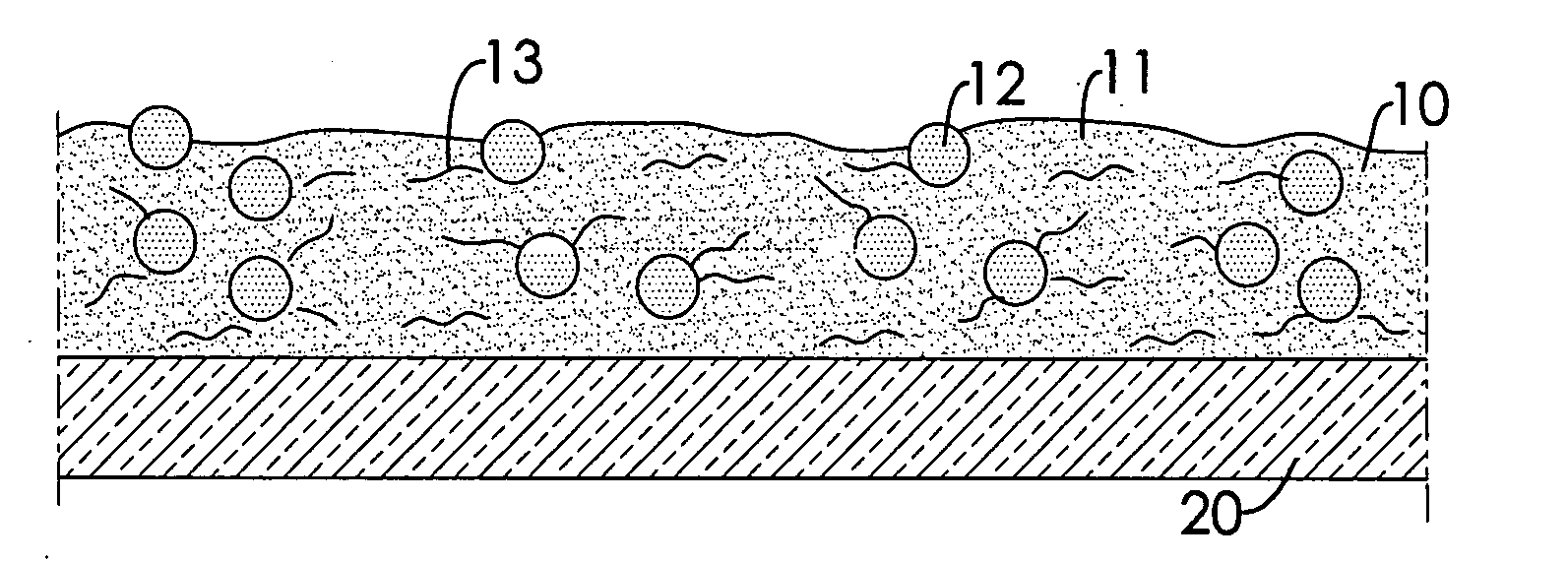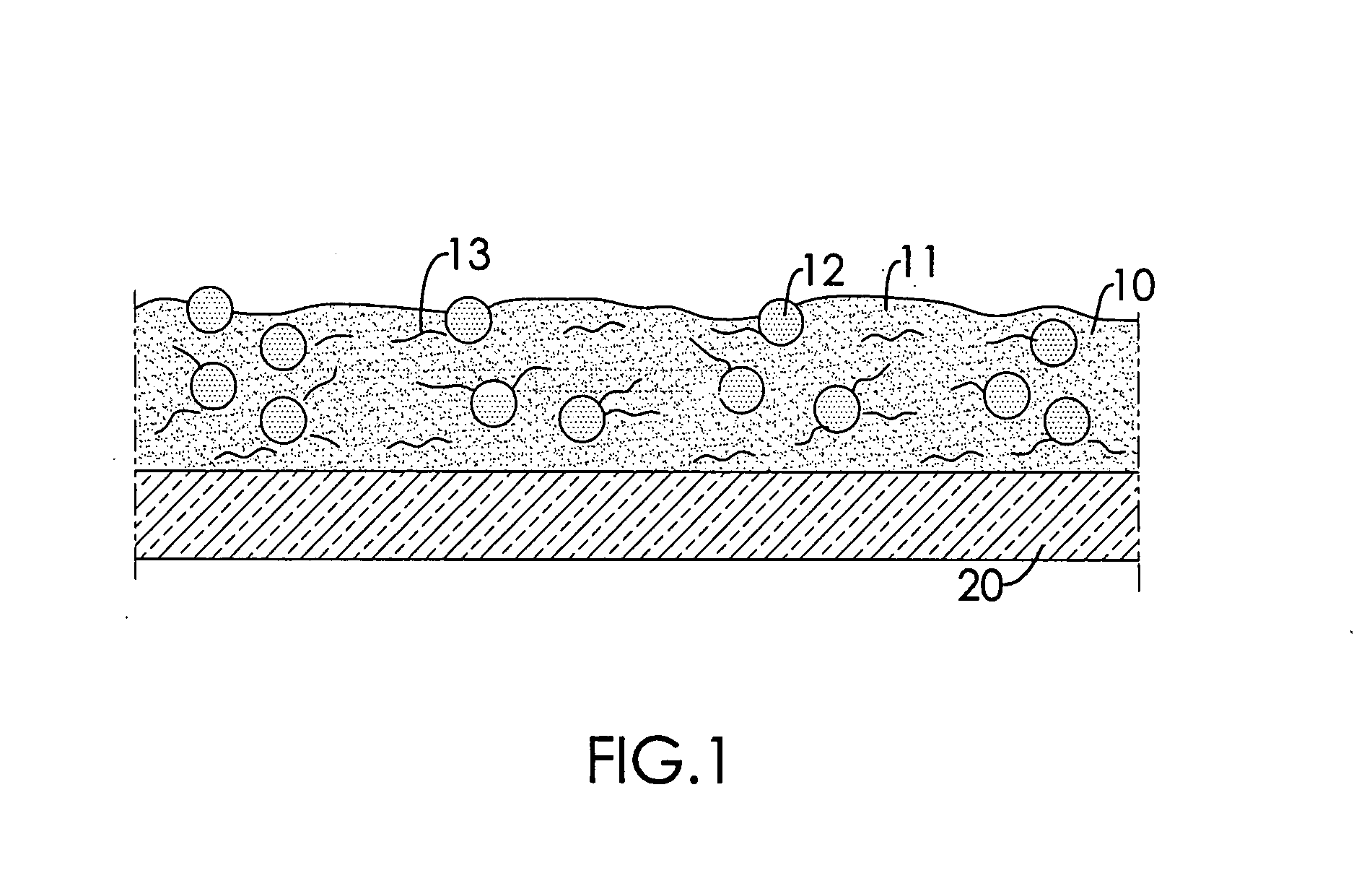Composition of anti-glare coating
a technology of anti-glare coating and coating, which is applied in the direction of dental care, inks, synthetic resin layered products, etc., can solve the problems of affecting the appearance of the surface, and the anti-glare coating is difficult to be coated uniformly over the substra
- Summary
- Abstract
- Description
- Claims
- Application Information
AI Technical Summary
Benefits of technology
Problems solved by technology
Method used
Image
Examples
example 1
[0030]A composition of example 1 is shown as table 1, wherein the dispersant is high molecular weight poly-ether ester amine salt. Testing results of example 1 is shown as table 2.
TABLE 1Silica (Size = 1.5 μm)5gDispersant (high molecular weight poly-ether0 / 0.125 / 0.25 / 0.375gester amine salt)Resin (acrylic resin and TMPTA)100gPhotoinitiator (DAROCUR 1173)4gIso-propyl alcohol150g(Solid content of the anti-glare coating is 40%.)
TABLE 2dispersantPrecipitationA (parts)HazeGlossDOIprevention (ml)018.260.621.9130.12514.384.669.8100.2510.7121.3135.560.3759.3125.6146.25
example 2
[0031]A composition of example 2 is shown as table 3, wherein the dispersant is amine salt with phosphate ester surfactant. A result of example 2 is shown as table 4.
TABLE 3Silica (Size = 2.3 μm)5gDispersant (amine salt with phosphate ester0 / 0.125 / 0.25 / 0.375gsurfactant)Resin (acrylic resin and PETTA)100gPhotoinitiator (IRGACURE 184)4gIso-propyl alcohol150g(Solid content of the anti-glare coating is 40%.)
TABLE 4DispersantPrecipitationB (parts)HazeGlossDOIPrevention (ml)015.3104.7153130.12513.8122.420150.2514.4123.320710.37514.8120.62360
[0032]According to these examples, the dispersant can prevent the particles from precipitating and adjust the haze, gloss and DOI. Therefore, manufacturers can conveniently alter a desired panel or glass by adjusting kinds or amount of dispersant used.
PUM
| Property | Measurement | Unit |
|---|---|---|
| composition | aaaaa | aaaaa |
| dimension | aaaaa | aaaaa |
| weight | aaaaa | aaaaa |
Abstract
Description
Claims
Application Information
 Login to View More
Login to View More - R&D
- Intellectual Property
- Life Sciences
- Materials
- Tech Scout
- Unparalleled Data Quality
- Higher Quality Content
- 60% Fewer Hallucinations
Browse by: Latest US Patents, China's latest patents, Technical Efficacy Thesaurus, Application Domain, Technology Topic, Popular Technical Reports.
© 2025 PatSnap. All rights reserved.Legal|Privacy policy|Modern Slavery Act Transparency Statement|Sitemap|About US| Contact US: help@patsnap.com


